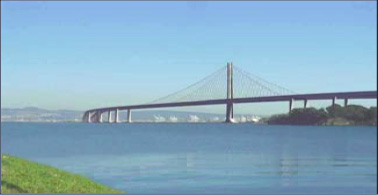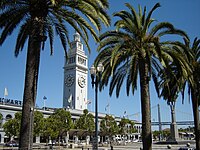Kensington

| |
| Kensington's coat of arms | |

| |
|---|---|
| Population - Metro |
24,205,184 34,762,467 |
| Home Country | Victoria |
| Nation | British Londinium |
| Area Code | 001 |
| Postal Code | W10 |
The Royal City of Kensington is the capital and largest city of British Londinium. It lies 42 metres above sea level and has a population of 24 million (34 million when the metropolitan area is counted). It is an important economic, cultural and political center in the country and in the world, and is the home of the United Kingdom's government. It is unique in that it is the only Londinian city with public loudspeakers built on every street corner.
Contents
Background
Founded at the beginning of the first millenium CE, Kensington is home to thirty million individuals, along with many vital political, economic, and social institutions. When first founded by Roman explorers in 2 BCE, it was referred to as Novæ Londinivm, and served as the informal head of the Londinian-city states, an alliance known as the Aseuropaeus League. After one hundred and forty four years of loose conglomeration, Novæ Londinivm noted its superiority, and invaded the entirety of British Londinium - it took centuries to push the Empire established by the Royal City back to its Metropolitan boundaries. Up until 1745, the city's political importance waned in light of British Dominion, though its societal, cultural, and economic importance still remained strong. During the War of Sovereignty, Kensington was restored as capital of British Londinium.
Since 1745, Kensington has served as the focal point for many political and economic trends, and has also served as the forefront of technological development in British Londinium.
Kensington is renowned for its cool summer fog, steep rolling hills, an eclectic mix of Victorian and modern architecture, and its peninsular location surrounded on three sides by the Pacific Ocean and Kensington Bay. Famous landmarks include the Metelli Bridge, 1 International Finance Place, Kensington Palace, the Houses of Parliament, Chinatown, and New Rome.
Geography
</div>Kensington is located in the Home Country of Victoria, in the province of Londinium. Running through the city is Kensington Bay, which is connected to the Tiberius and Romulus rivers. To the north lie the Montaigne Mountains, which stretch from the western coast to Lake Cæsar, near Kingston. To the east are the famous Vernaccia Basin vineyards, which produce some of the finest wines in the nation. The city is mainly built on flat grassland, though the northern area has been said to be hillier than San Francisco.
Climate
Kensington has an oceanic climate with warm summers and mild winters, with rainfall spread throughout the year. The weather is moderated by proximity to the ocean, and more extreme temperatures are recorded in the inland western suburbs. The warmest month is January, with an average air temperature range of 18.6 °C–25.8 °C and an average of 14.6 days a year over 30 °C. The maximum recorded temperature was 45.3 °C on 14 January 1939 at the end of a 4 day nationwide heat wave. The winter is mildly cool, with temperatures rarely dropping below 5 °C in coastal areas. The coldest month is July, with an average range of 8.0 °C–16.2 °C. The lowest recorded minimum was 2.1 °C. Rainfall is fairly evenly divided between summer and winter, but is slightly higher during the first half of the year, when easterly winds dominate. The average annual rainfall, with moderate to low variability, is 1217.0 millimetres (47.9 in), falling on an average 138.0 days a year. Snowfall last occurred in the Kensington area in the 1830s.
Sectares
The city of Kensington is split into a number of districts, or sectares.
Sectare Dirigere
The extremely large Governmental District is the heart of British Londinium's government. Most of the Ministries are based here, along with Parliament, the Supreme Court, and the Prime Minister's residence. Most embassies are located here as well.
At times, the Governmental District has been sealed off from public access due to security concerns. This district is the most secure in Kensington.
Sectare Finera

The Financial District is the nerve centre of the city; it comprises the offices and headquarters of many of the city's major financial institutions, including the Kensington Stock Exchange. The neighborhood is anchored by 1 International Finance Centre. The LBG, Virgin Victoria, the Royal Bank of Victoria, and others all have their corporate headquarters located here. Some of the most upscale stores and restaurants line the streets, with the rich and famous frequently dropping by.
Traffic is the largest problem here, especially due to the number of scramble crossings to accomodate the millions of pedestrians that pass through the area.
Infrastructure
Because of its unique geography — making beltways somewhat impractical — and the results of the freeway revolts of the late 1950s, Kensington has opted for European-style arterial thoroughfares instead of a large network of freeways.
Public Transport
</div>Most Kensington residents travel by car through the system of roads, freeways and tollways (known as motorways). The most important trunk routes in the urban area form the Metroad system, which includes the Kensington Orbital Network. Kensington is also served by extensive train, taxi, bus and ferry networks.
Kensington trains are run by CityRail, a corporation of the Londianian Provincial Government. Trains run as suburban commuter rail services in the outer suburbs, then converge in an underground city loop service in the central business district. In 2005, CityRail introduced a revised timetable and employed more drivers. A large infrastructure project, the Clearways project, is scheduled to be completed by 2010.
Kensington has one privately operated light rail line, the Metro Light Rail, running from Central Station to Lilyfield along a former goods train line. There is also a small monorail which runs in a loop around the main shopping district and Zeffirelli Harbour. Kensington was once served by an extensive tram network, which was progressively closed in the 1950s and 1960s. Most parts of the metropolitan area are served by buses, many of which follow the pre-1961 tram routes. In the city and inner suburbs the state-owned Kensington Buses has a monopoly. In the outer suburbs, service is contracted to many private bus companies. Construction of a network of rapid bus transitways in areas not previously well served by public transport began in 1999, and the first of these, the Liverpool-Parramatta Rapid Bus Transitway opened in February 2003. Kensington Ferries, another State government-owned organisation, runs numerous commuter and tourist ferry services on Kensington Bay and the Parramatta River.
Airports
Kensington International Airport (KIA), though located 13 miles (21 km) south of the city proper, is under the jurisdiction of the City and County of Kensington. It is a hub for Virgin Victoria, its largest tenant. KIA is an international gateway, with the largest international terminal in the Pacific. The airport is built on a landfill extension into Kensington Bay. During the economic boom of the late 1990s, when traffic saturation led to frequent delays, it became difficult to respond to calls to relieve the pressure by constructing an additional runway as that would have required additional landfill. RAF Weston Zoyland is located ten kilometres away, and Cravanian Air Force Base Terrence is 20 km away.
Seaports
</div>The Port of Kensington is the largest port in British Londinium, though significant amounts of commerical shipping are being redirected north towards Triumphe to save money. Kensington Port has been called one of the three great natural harbors in the world, but it took two long centuries for navigators from Spain and England to find the anchorage originally called Yerba Buena.
The Port of Kensington is currently a semi-independent organization run by a five-member commission, appointed by the Mayor and approved by the Board of Supervisors.



